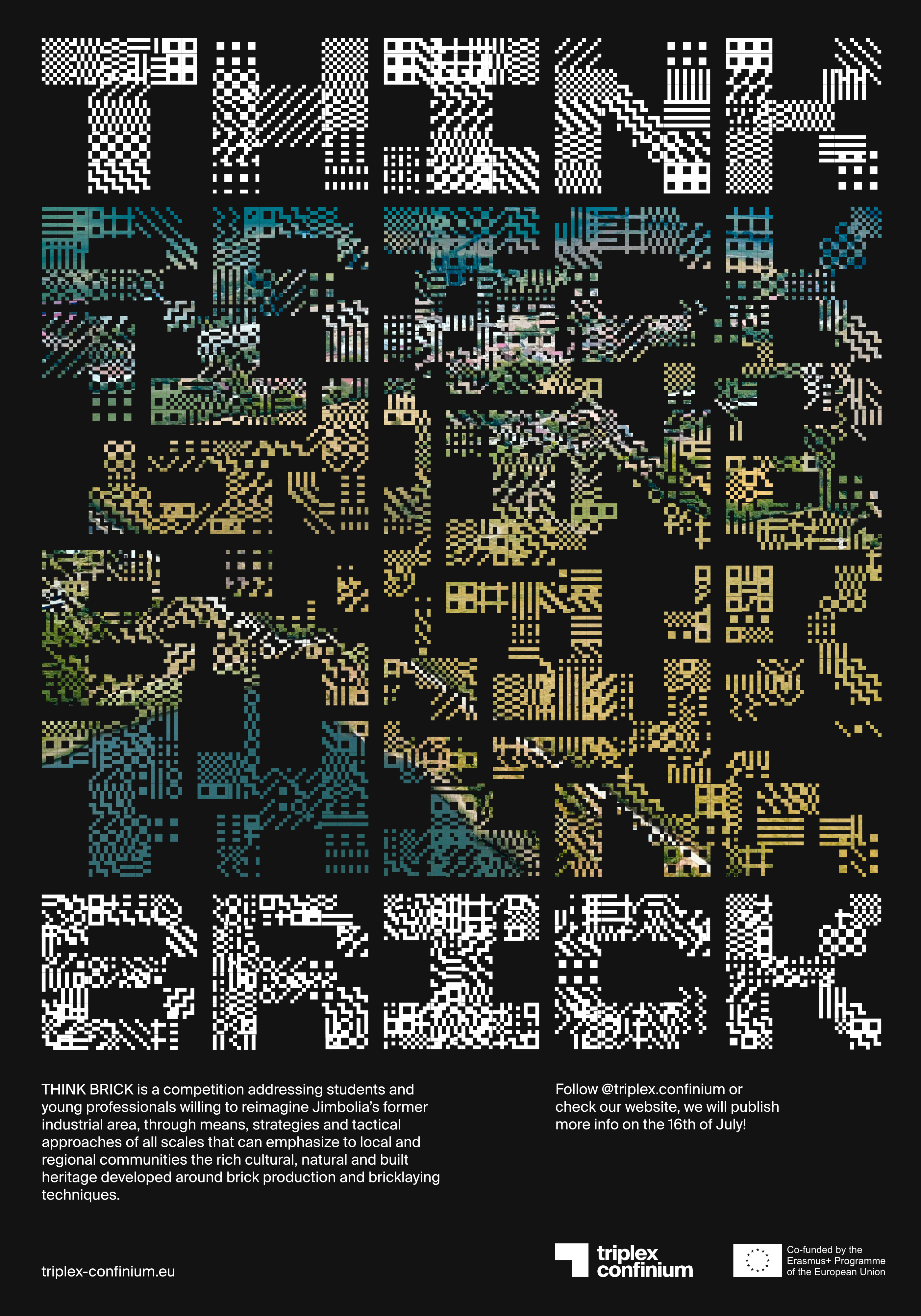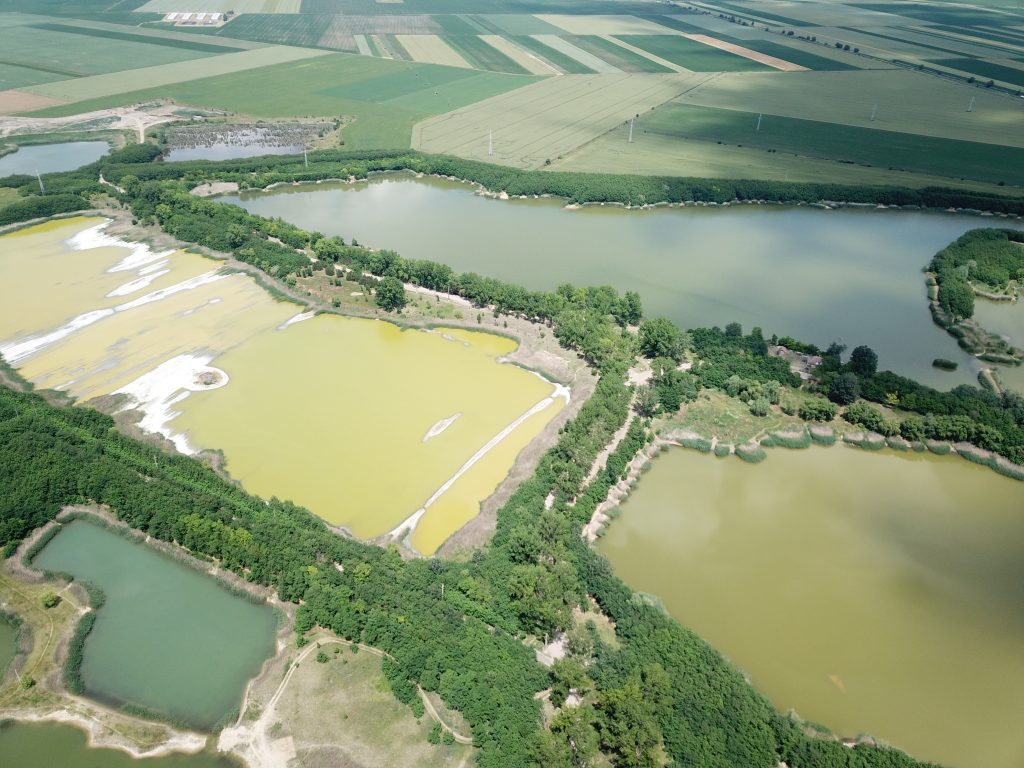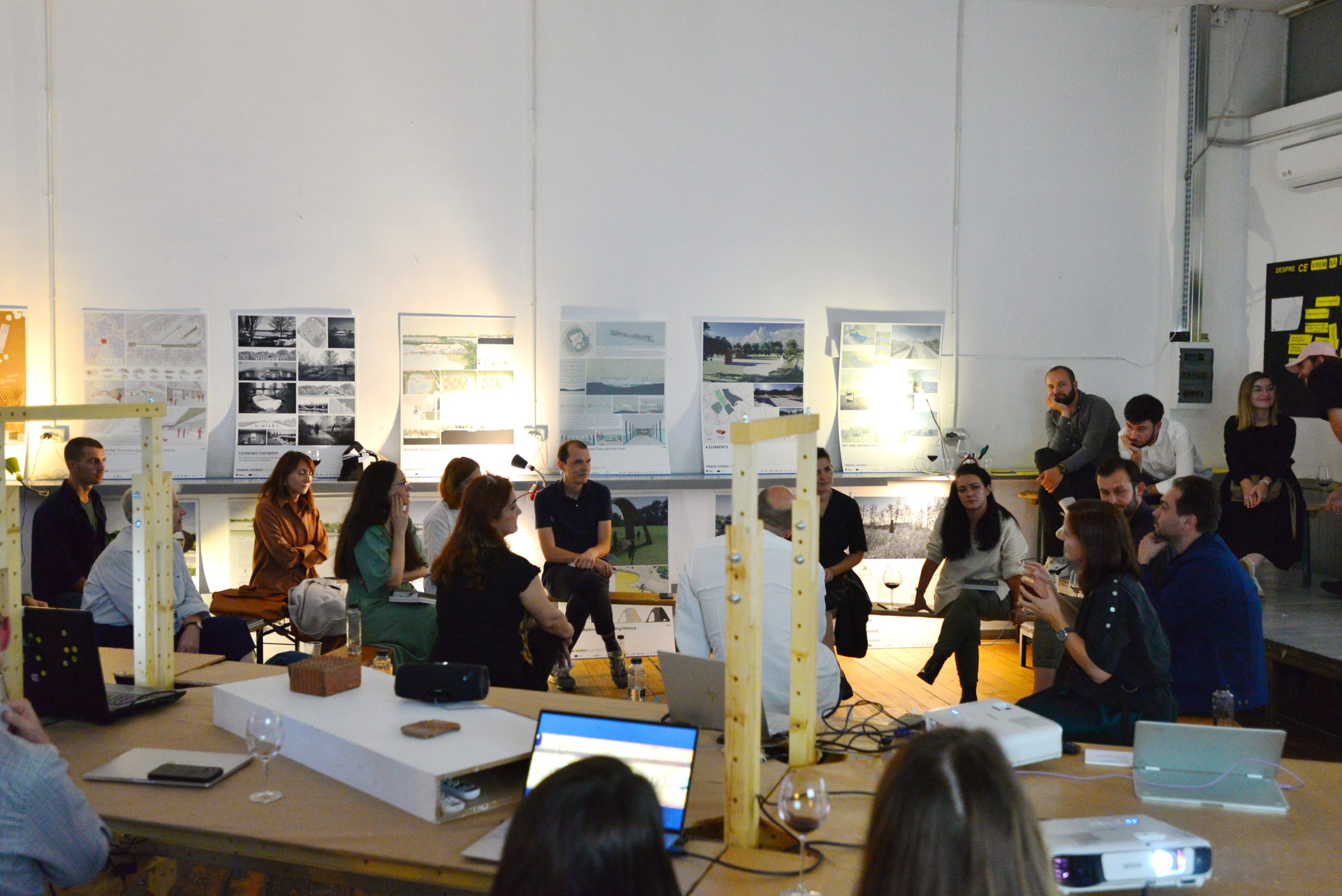
THINK BRICK! ARCHITECTURE CONTEST
PRELAUNCH of our THINK BRIK contest!
THINK BRICK Is a competition addressing students and young professionals willing to reimagine Jimbolia’s former industrial area, through means, strategies and tactical approaches of all scales that can emphasize to local and regional communities the rich cultural, natural and built heritage developed around brick production and bricklaying techniques.
PREAMBLE
The history of the Banat region from the Turkish wars until today can be seen as impressions left in the landscape. The initially marshy area was easily drained due to the advances brought about by the industrial revolution, with the farmland created through this process becoming the largest and best quality agricultural region in the Kingdom of Hungary and the Habsburg Empire, which, in turn, made the estate owners here wealthy. Subsequently the income originating from agriculture was invested in brick factories to exploit the excellent quality clay to be found here, which, following the Austro-Hungarian Compromise of 1867, turned into a huge network in unison with the development of the region of Banat. After the Great War the Treaty of Trianon split the region up into three parts, which put an end to this previously unified development. The recent decades of European integration following the transition into democracy have once again created the opportunity for tighter relations between the parts of the formerly unified region in Romania, Serbia and Hungary. What are the common features, opportunities and ambitions of the formerly united region in addition to the different characteristics? To what extent is this represented by a modern interpretation of the impressions of the heritage of the former brick production network and its regional-level presentation?
The call for entries concentrates on the heritage of brick production and its landscape-shaping role. As brick production is not only an important part of the past of Jimbolia, the history of the brick factory and its heritage, with its impact lasting even today, are integral in the history of the entire region (among other aspects, the local brick factory produced the bricks for the reconstruction of Szeged following the Great Flood of 1879).
THE SITE.
The quarry lakes developing in the former brick factory clay pits are a good example in the area of the interaction between human activity and the landscape. The quarrying activity transformed the former relief of the area, but after the brick factory closed down this change enabled the creation of the natural environment of today.
These lakes are located in the northern part of the settlement, beside the largely deserted and unused area of the former brick factory, at the border of the urban environment and cultivated nature. It has both natural and industrial history value at the same time, and although being a popular tourist spot it is still a kind of “no man’s land” due to its character: industry has deserted it, but nature has not yet completely won it back.

Jimbolia former clay quarry
PROBLEM DEFINITION:
Through its many industrial facilities, (Bohn, Muschong), Jimbolia (RO) has been, as early as the XIX century, at the forefront of brick and tile production within the historic Banat region. Similar brick production facilities and clay pits were functioning throughout the region. Clay products from Jimbolia or Kikinda were used throughout the entire Austro-Hungarian Empire, and were even presented and certified for their quality at the 1900 Exposition Universelle in Paris. The partition of the Historic Banat region between the Kingdom of Serbs, Croats and Slovenes and the Kingdom of Romania, at the end of the first world war, introduced a new element to this story of economic success. A border line was drawn between these two sister towns, and from here on, each developed under the auspices of new national administrations. Brick production, however, has remained a staple of the local economy alongside agriculture and other smaller manufacturing enterprises. This has remained a reality even during the comunist administration. The past three decades, with their transition toward the new global market economy, dealt a severe blow to these once proud regional enterprises. In the case of Jimbolia the factories were dismantled brick by brick, only the claypits remaining as a new natural feature of extreme cultural and environmental importance. Other, similarly important traces are however to be found in the building tradition of the local houses, in the naive but beautiful facades of the Futok workers colony, in the facing of important local public buildings, and even in the stories still told by the people that once populated this history.
HYPOTHESIS:
Triplex Confinium partners believe that this rich background not only deserves to be explored but also reimagined in novel ways, though architectural (but not only) means that can tell this story for future generations. The competition is, in this respect, a call for ideas that, through their scope and approach, can build a mosaic of choices and options for future developments. These should help local communities, stakeholders and administrators, write new narratives for a complex territory that is currently positioned at the intersection between built heritage (cultured as well as naive), nature, regional history and multiculturality, economic speculation and political decision.
OBJECTIVES:
The former industrial area with its clay pits, (now a natural park), the Futok workers colony and main railway station will serve as the strategic site offering participants with a background on the development of the area and its genius locci. The different interventions to be imagined will however be organized in and around the claypits area. Around these, proposed projects are free to explore at all scales and through various building programs, ways in which the site can be recovered, all while strengthening its natural qualities.
Two categories of projects can be submitted:
- Medium scale compact architectural projects (maximum of 1000m2) facilitating the visitation of this site while telling its story through various communication strategies.
- Small scale artistic/ architectural interventions to be organized in a landscaping dispersed scheme. These interventions should as well facilitate the visitation of the site while telling its story through various communication strategies.
- Landscape interventions that allow for a better understanding and parkour throughout the entire site
METHODOLOGY:
Throughout the months of July, August and September willing contenders will be offered access to bibliographic material and learning experiences that will slowly build the project brief, it’s more detailed objectives and possible outcomes. In this respect the contest is also a teaching strategy emphasizing Triplex Confinium’s different learning objectives. Participants are invited to follow our projects page and familiarize themselves with the site, its history and present day realities.
An intensive teaching program as well as a summer school mapping the strategic site will be organized during the last two weeks of September (17 Sept – 01 Oct). Partner schools can be present on site with research teams of four preselected students. Stay tuned for our call for participants.
The information gathered through the on site exploration activities will complete the contest brief and set the basis for a research atlas focused on the historic industrial heritage of the Banat region.
OUTCOMES:
Projects submissions (100x70cm poster presentation and project brief) are due February 2022.
Results will be disseminated internationally and tested with local stakeholders and communities throughout the second summer school to be organized in spring of 2022.
A full competition launch with more details regarding the strategic site, calendar, jury, and prizes, will follow on the 16th of July.








